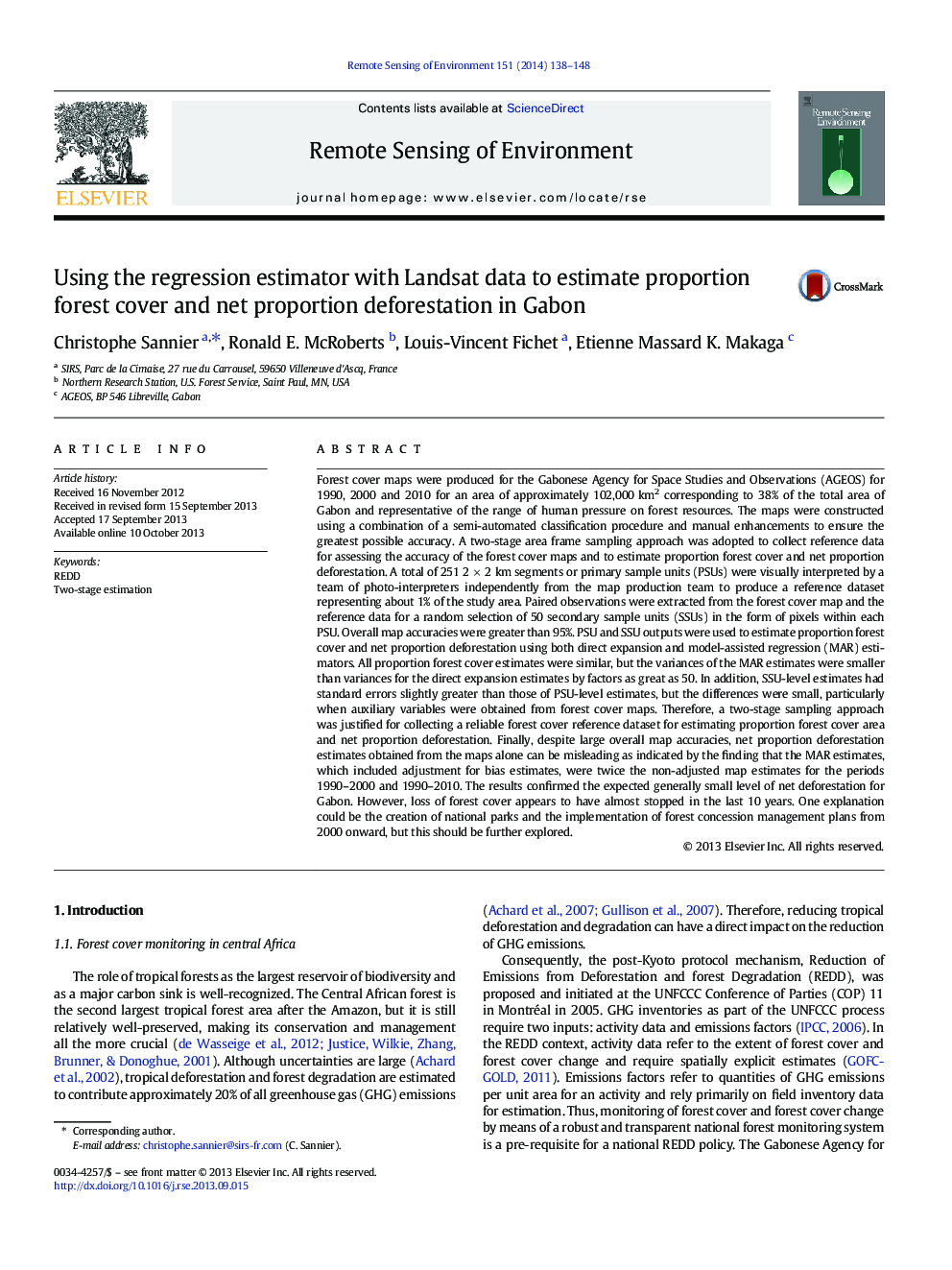| کد مقاله | کد نشریه | سال انتشار | مقاله انگلیسی | نسخه تمام متن |
|---|---|---|---|---|
| 4458880 | 1621249 | 2014 | 11 صفحه PDF | دانلود رایگان |
• Forest cover maps were produced for more than 100,000 km2 in 1990, 2000, and 2010.
• Two sampling designs were tested for estimating forest cover and forest cover change.
• Direct and model assisted regression estimates were produced.
• Both model based approaches resulted in variance reduction by up to a factor of 50.
• Net deforestation was less between 2000 and 2010 than between 1990 and 2000.
Forest cover maps were produced for the Gabonese Agency for Space Studies and Observations (AGEOS) for 1990, 2000 and 2010 for an area of approximately 102,000 km2 corresponding to 38% of the total area of Gabon and representative of the range of human pressure on forest resources. The maps were constructed using a combination of a semi-automated classification procedure and manual enhancements to ensure the greatest possible accuracy. A two-stage area frame sampling approach was adopted to collect reference data for assessing the accuracy of the forest cover maps and to estimate proportion forest cover and net proportion deforestation. A total of 251 2 × 2 km segments or primary sample units (PSUs) were visually interpreted by a team of photo-interpreters independently from the map production team to produce a reference dataset representing about 1% of the study area. Paired observations were extracted from the forest cover map and the reference data for a random selection of 50 secondary sample units (SSUs) in the form of pixels within each PSU. Overall map accuracies were greater than 95%. PSU and SSU outputs were used to estimate proportion forest cover and net proportion deforestation using both direct expansion and model-assisted regression (MAR) estimators. All proportion forest cover estimates were similar, but the variances of the MAR estimates were smaller than variances for the direct expansion estimates by factors as great as 50. In addition, SSU-level estimates had standard errors slightly greater than those of PSU-level estimates, but the differences were small, particularly when auxiliary variables were obtained from forest cover maps. Therefore, a two-stage sampling approach was justified for collecting a reliable forest cover reference dataset for estimating proportion forest cover area and net proportion deforestation. Finally, despite large overall map accuracies, net proportion deforestation estimates obtained from the maps alone can be misleading as indicated by the finding that the MAR estimates, which included adjustment for bias estimates, were twice the non-adjusted map estimates for the periods 1990–2000 and 1990–2010. The results confirmed the expected generally small level of net deforestation for Gabon. However, loss of forest cover appears to have almost stopped in the last 10 years. One explanation could be the creation of national parks and the implementation of forest concession management plans from 2000 onward, but this should be further explored.
Journal: Remote Sensing of Environment - Volume 151, August 2014, Pages 138–148
